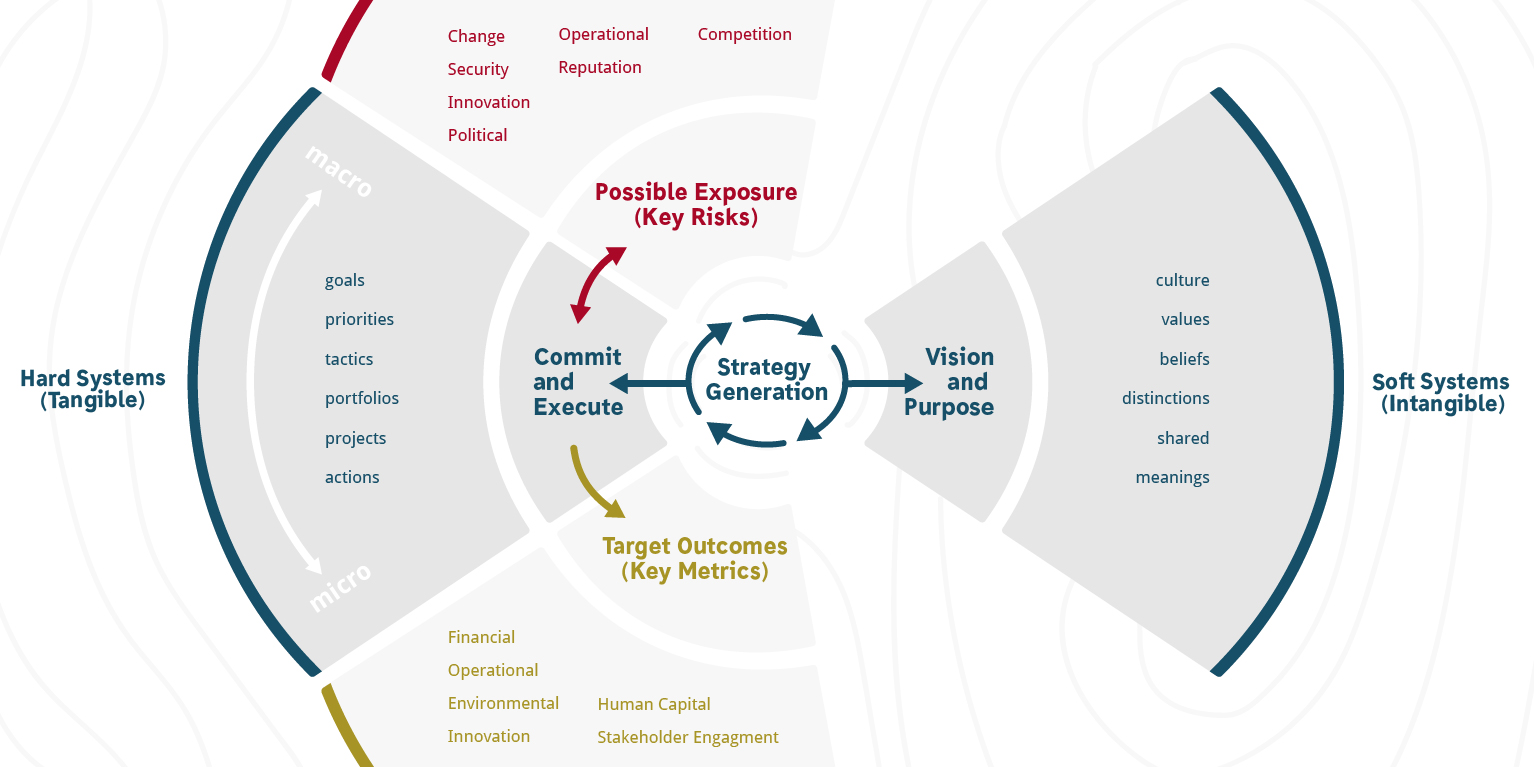An Integrated Framework for Strategic Execution
I do enjoy a great diagram, especially a visual framework or a methodology. I have seen many well constructed diagrammatic frameworks covering various aspects of business strategy including planning, execution, delivery, values, outcomes etc…. But they can be a bit dull and, on occasion, overly academic! I am always searching for a visual that attempts to unify all the different facets of strategic thinking in a clear, concise context, and does so in a way the business people can understand and relate to their organizations and their circumstances.
A picture is worth a thousand words
Core to StrategyBlocks is using visuals to tell the story of strategy — a picture is just an easier and faster way for people to understand and retain information. So we have created our own conceptual framework based on the numerous strategic conversations we have had with executive and business owners from all over the world, and our internal experiences at StrategyBlocks. I am certainly not going to suggest ours is complete, and I think that is a good thing. As the field of strategic execution expands so too should the way we conceptualize it. Business strategy (much like our framework) should be a dynamic process that we are constantly “strategizing” and therefore always evolving, moving and growing. So let me break down our thinking.
Strategy Generation
Central to our framework is the constant process of strategizing: generating strategic ideas both top-down (from vision) and bottom-up (from execution). What is critical here is the direct alignment between each. Without clear direction people will make decisions based on their own ingrained knowledge to overcome obstacles, and this, of course, may not result in the desired outcome. Alignment to vision is key!
Soft Strategic Systems
Vision and purpose (mission) is a figurehead statement that clearly articulates a positive view of the future. It needs to motivate and guide the total combined resources of the organization. Vision and purpose is part of the soft strategic system. Within this system sits the culture of the business, its values, and beliefs. It includes the internal language of the organization, its shared meanings and stories. It is not taught: it is learned over time and it is an informal intangible structure that ripples through those hard strategic systems.
Hard Strategic Systems
- Commit & Execute
Hard systems are very different. These are the tangible things that each of us contribute to achieve vision and purpose, and it is the collective output of the workforce. We each commit to take ownership for the execution of areas of work where we hold domain expertise and collaborate with our peers to deliver. These activities exist within a formal hierarchy, on a scale from macro to micro strategic. I am sure you will be familiar with long term goals supported by priorities, composed of portfolios of strategic projects or quarterly objectives. These things are real, measurable and fundamental to delivering vision.
- Target Outcomes
As delivery progresses, activities are created, monitored and closed. But we need to ensure there is clear linkage between what we do and the ultimate benefit, a desired outcome. This is the field of metrics monitoring. These are the key indicators which definitively tell us if the activities of which we are committed to are meeting the expectations of stakeholders. They can be financial, operational, human, environmental, anything we can count and derive a variance from plan. However they have reduced value in isolation, and they should maintain a formal link to activity and an informal relationship to the soft strategic systems.
- Possible Exposure
But we must also consider the possibility that events could derail our best intentions for delivery. It could be external, from outside of the organization, or driven by an internal failure to execute. What’s important is that the potential for risk to affect our strategic plan is recognized and acknowledged. Having done so we can establish steps to mitigate against this risk occurring at all, or if it did we have identified post response steps to minimize impact.
Execution Health
Strategic execution is not just about successful delivery of projects, or monitoring key performance indicators, or creating a risk register. It is about using all these variables together to establish the health of execution. It needs to be part of the fundamental fabric of the business, a dynamic part of organizational culture, and not a multiyear static planning exercise.




Leave A Comment